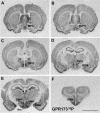Hypothalamic action of phoenixin to control reproductive hormone secretion in females: importance of the orphan G protein-coupled receptor Gpr173
- PMID: 27440717
- PMCID: PMC5142227
- DOI: 10.1152/ajpregu.00191.2016
Hypothalamic action of phoenixin to control reproductive hormone secretion in females: importance of the orphan G protein-coupled receptor Gpr173
Abstract
Sexual maturation and maintenance of reproductive function are regulated by neurohormonal communication between the hypothalamus, pituitary, and gonads (referred to as the HPG axis). Phoenixin (PNX) is a newly identified, endogenous peptide abundantly produced in the hypothalamus and shown to be an important mediator of ovarian cyclicity. However, the underlying mechanisms by which phoenixin functions within the HPG axis are unknown. Previous in vitro studies demonstrated a direct action of PNX on gonadotrophs to potentiate gonadotrophin-releasing hormone (GnRH) induced luteinizing hormone (LH) secretion. Therefore, we hypothesized that centrally derived phoenixin regulates the preovulatory LH surge required for ovarian cyclicity. We observed a significant dose-related increase in the level of plasma LH in diestrous, female rats that were given an intracerebroventricular injection of PNX compared with vehicle-treated controls. While this suggests that even under low-estrogen conditions, PNX acts centrally to stimulate the HPG axis, further characterization is contingent on the elucidation of its cognate receptor. Using the "deductive ligand receptor matching strategy," we identified the orphan G protein-coupled receptor, Gpr173, as our top candidate. In cultured pituitary cells, siRNA-targeted compromise of Gpr173 abrogated PNX's action to potentiate GnRH-stimulated LH secretion. In addition, siRNA-mediated knockdown of endogenous Gpr173, which localized to several hypothalamic sites related to reproductive function, not only significantly extended the estrous cycle but also prevented the PNX-induced LH secretion in diestrous, female rats. These studies are the first to demonstrate a functional relationship between PNX and Gpr173 in reproductive physiology and identify a potential therapeutic target for ovulatory dysfunction.
Keywords: Gpr173; estrous cyclicity; luteinizing hormone; phoenixin.
Copyright © 2016 the American Physiological Society.
Figures




References
-
- Ajika K, Krulich L, Fawcett CP, McCann SM. Effects of estrogen on plasma and pituitary gonadotropins and prolactin, and on hypothalamic releasing and inhibiting factors. Neuroendocrinology 9: 304–315, 1972. - PubMed
-
- Belchetz PE, Plant TM, Nakai Y, Keogh EJ, Knobil E. Hypophysial responses to continuous and intermittent delivery of hypopthalamic gonadotropin-releasing hormone. Science 202: 631–633, 1978. - PubMed
-
- Butcher RL, Collins WE, Fugo NW. Plasma concentration of LH, FSH, prolactin, progesterone and estradiol-17β throughout the 4-day estrous cycle of the rat. Endocrinology 94: 1704–1708, 1974. - PubMed
-
- Chappel SC, Resko JA, Norman RL, Spies HG. Studies in rhesus monkeys on the site where estrogen inhibits gonadotropins: delivery of 17β-estradiol to the hypothalamus and pituitary gland. J Clin Endocrinol Metab 52: 1–8, 1981. - PubMed
MeSH terms
Substances
Grants and funding
LinkOut - more resources
Full Text Sources
Other Literature Sources
Molecular Biology Databases

